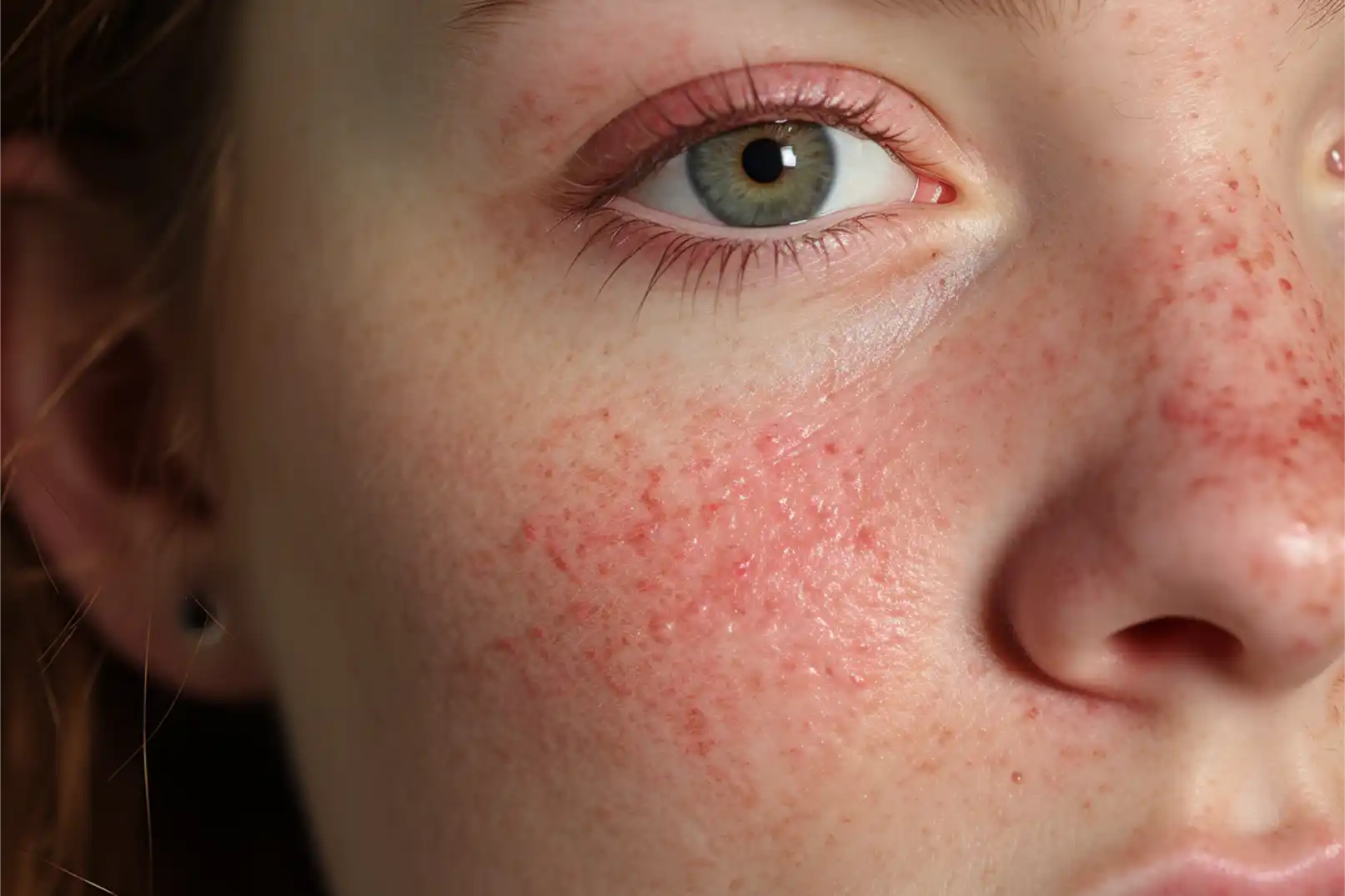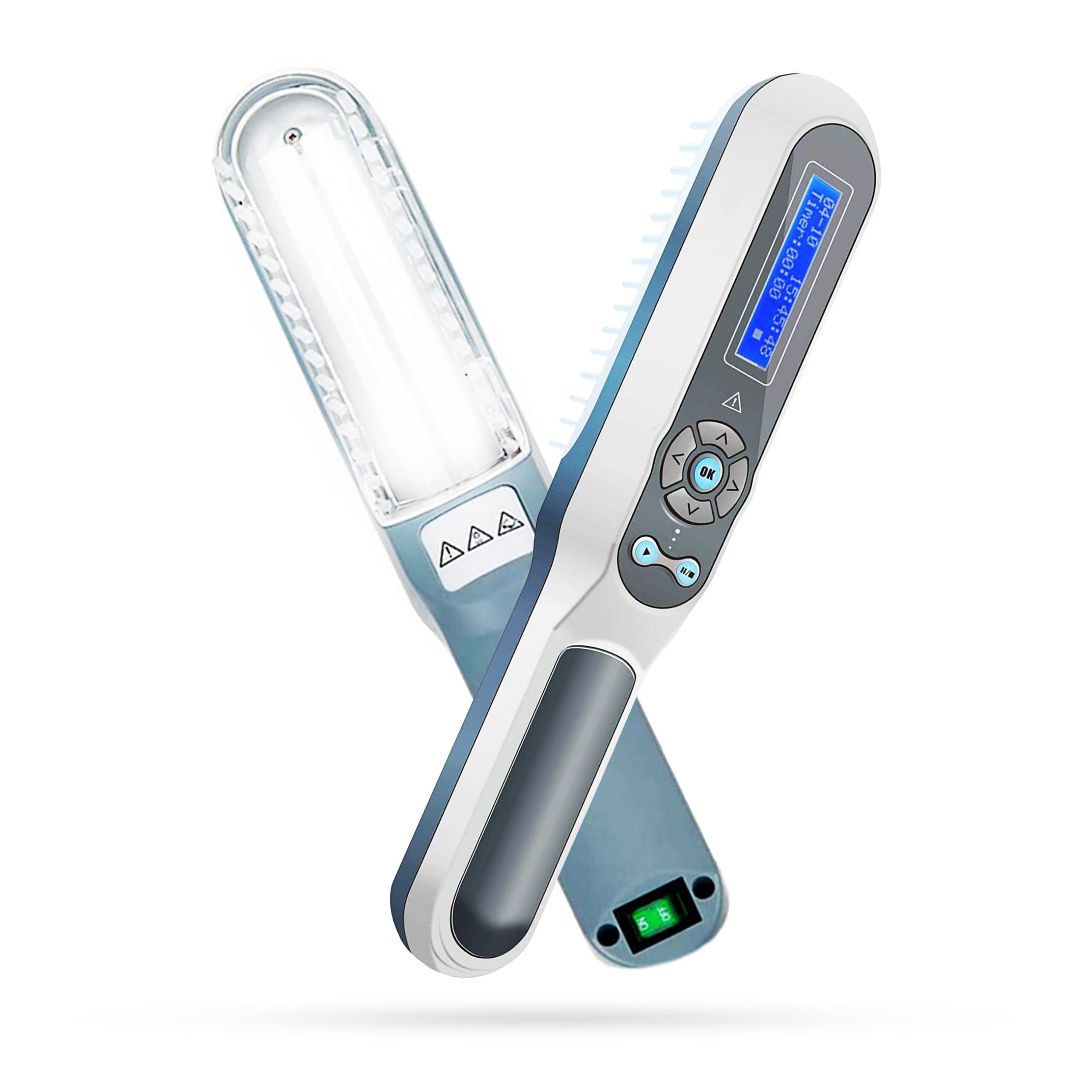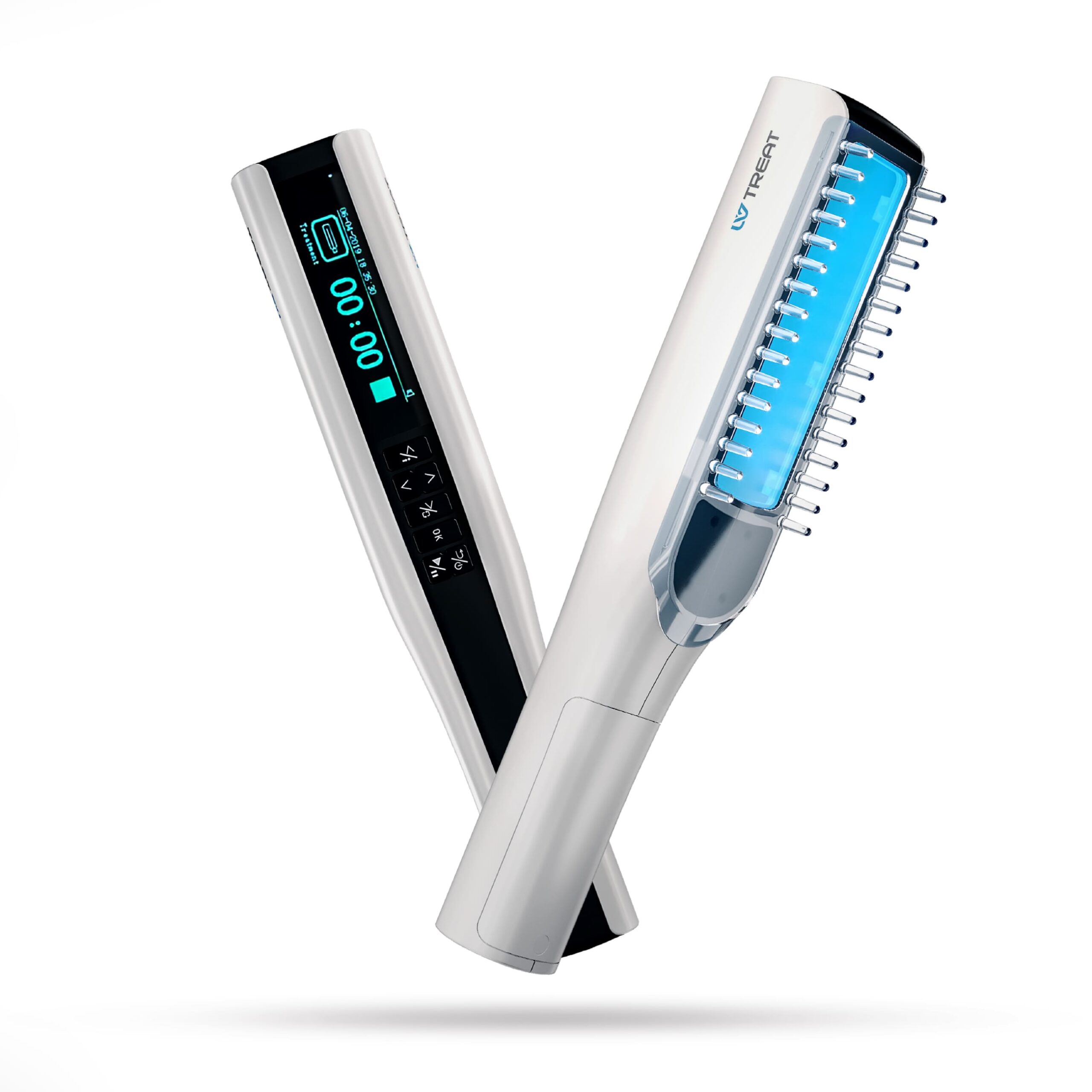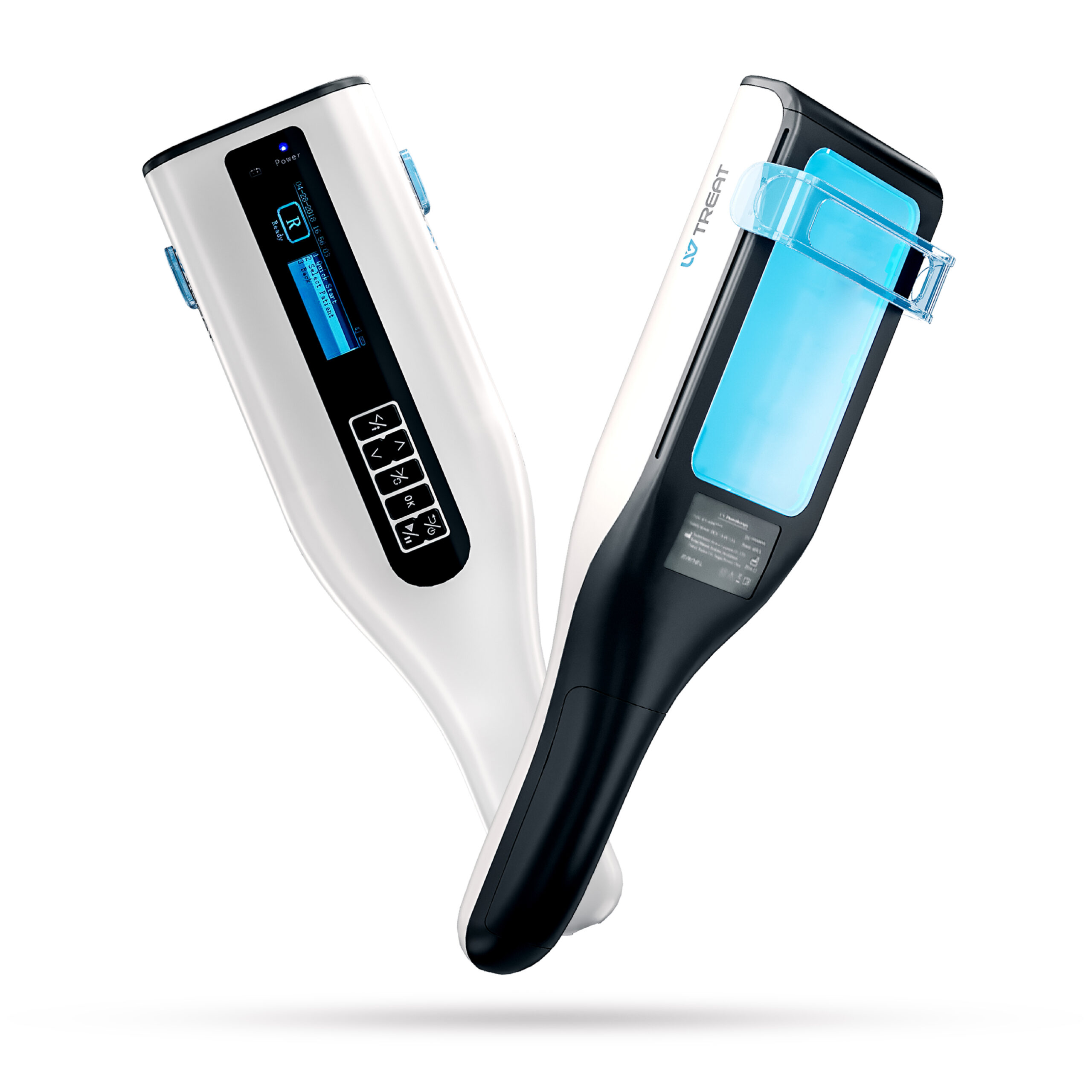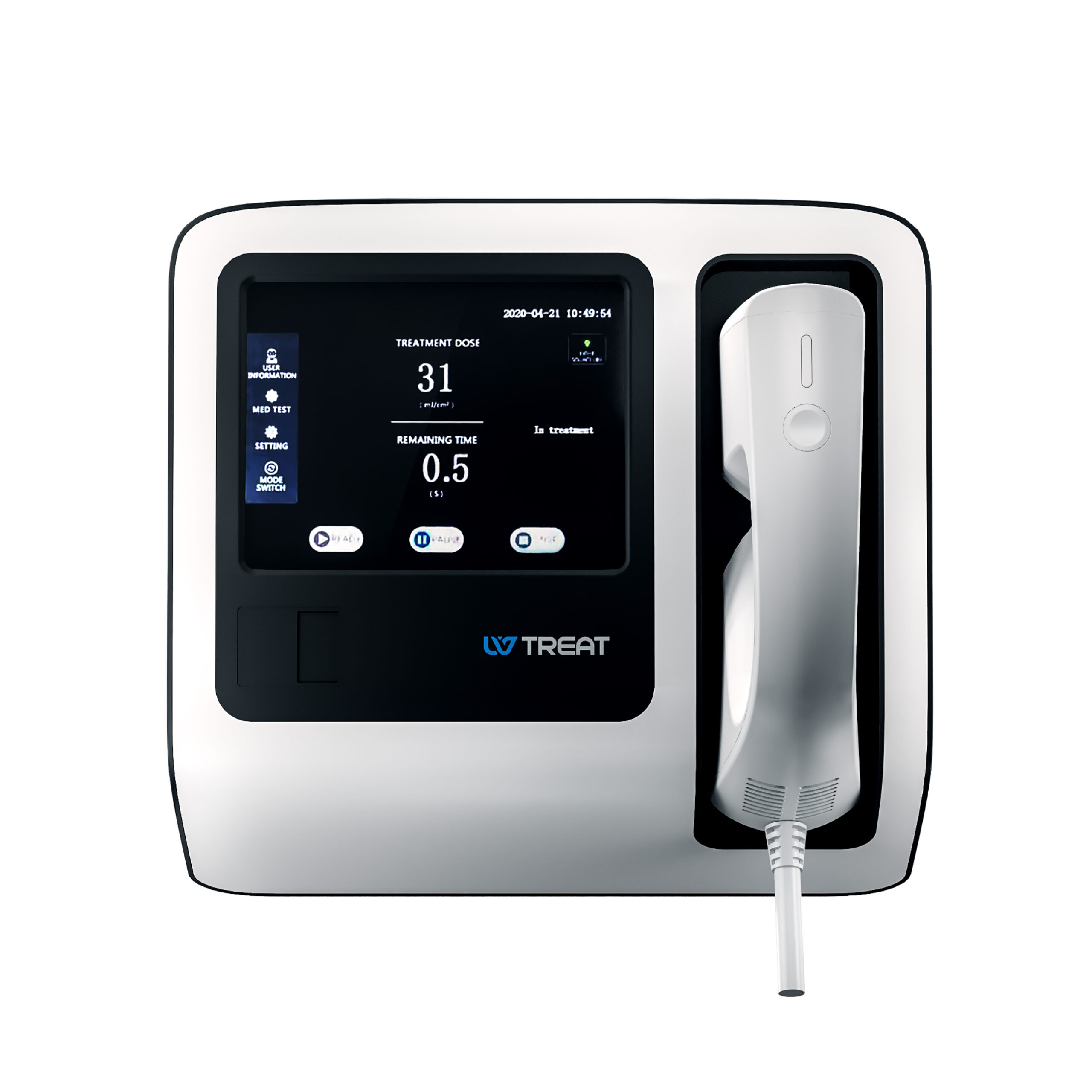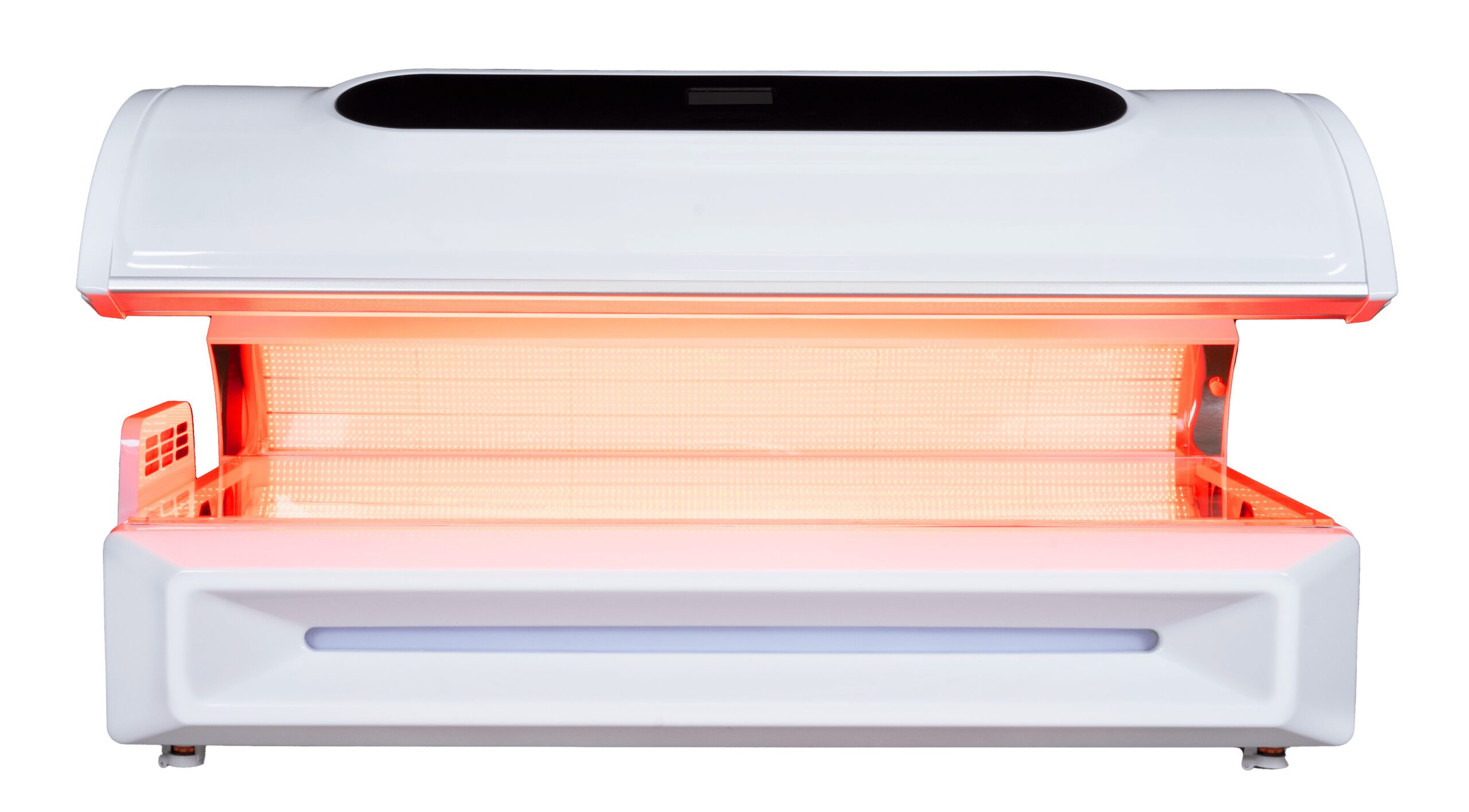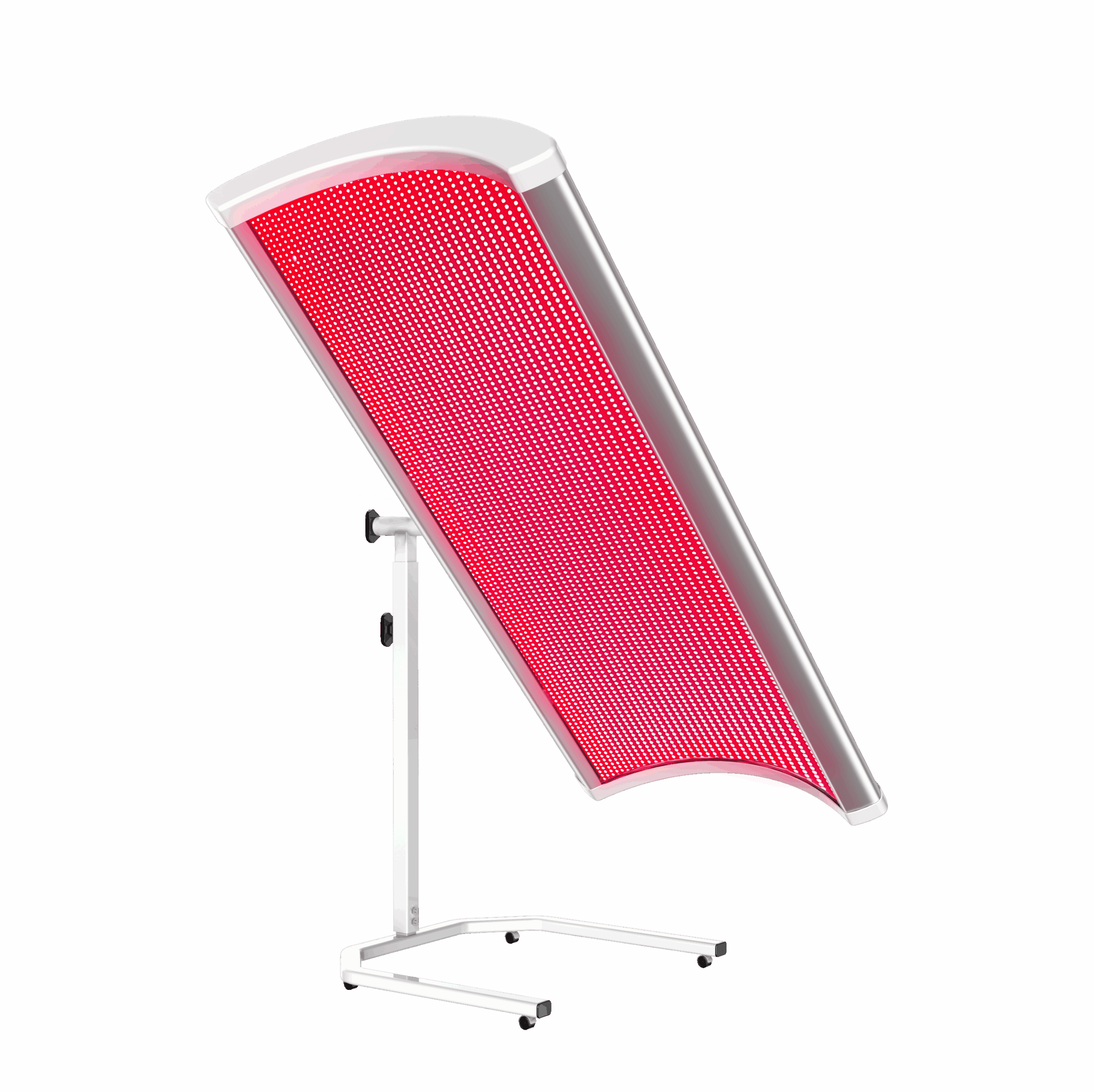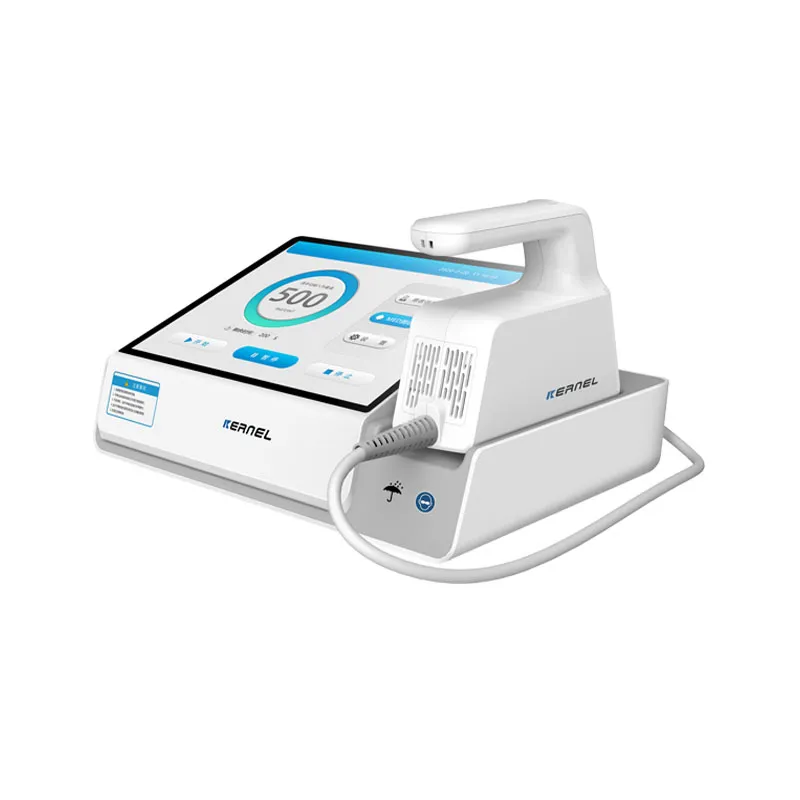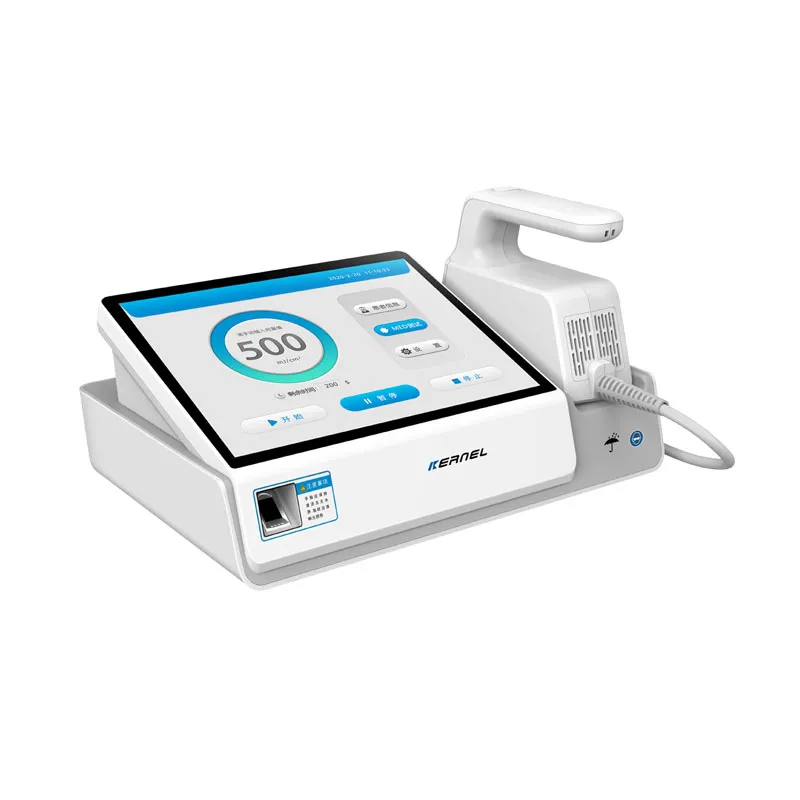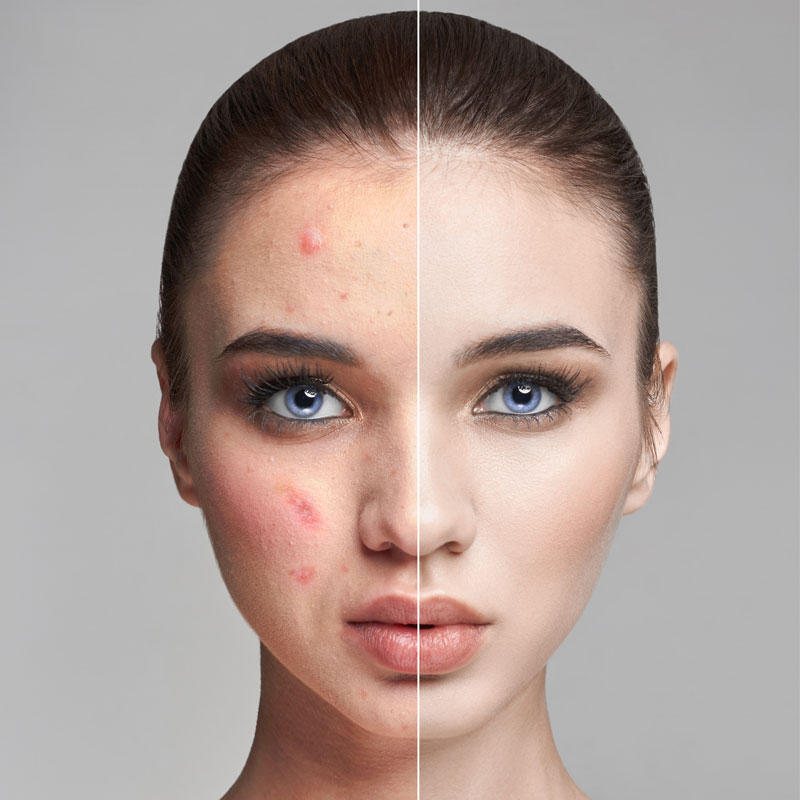Understanding the Difference Between Rosacea and Eczema
Rosacea and eczema are two distinct skin conditions that, while they may share some similarities, manifest very differently and require unique approaches to management and treatment. Understanding these differences is crucial for effective diagnosis, control, and management.
Rosacea: Symptoms and Characteristics
Rosacea is a chronic inflammatory skin condition that predominantly affects the face. It is characterized by persistent redness, visible dilated blood vessels (telangiectasia), and inflammatory lesions such as papules and pustules. Unlike acne, the papules and pustules in rosacea do not contain blackheads, or comedones. One of the hallmark features of rosacea is facial flushing or blushing, often triggered by environmental factors such as sun exposure, stress, hot beverages, or spicy foods. Over time, continuous inflammation can lead to thickening of the skin, particularly around the nose, a condition known as rhinophyma.
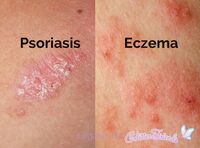
Rosacea is more commonly diagnosed in adults, typically between the ages of 30 and 50 years, and is prevalent in individuals with fair skin, although it can affect various skin types. The exact cause of rosacea remains unknown, but it is believed to result from a combination of genetic predisposition, immune system dysregulation, and environmental triggers.
Eczema: Symptoms and Characteristics
Eczema, also known as atopic dermatitis, is a multifaceted inflammatory skin condition, characterized by itchy, red, and dry patches on the skin. It is often associated with atopy, a genetic tendency to develop allergic diseases such as asthma, allergic rhinitis, and atopic dermatitis.
Eczema can occur at any age, although it predominantly affects infants and children; many of them experience symptom resolution as they grow older.
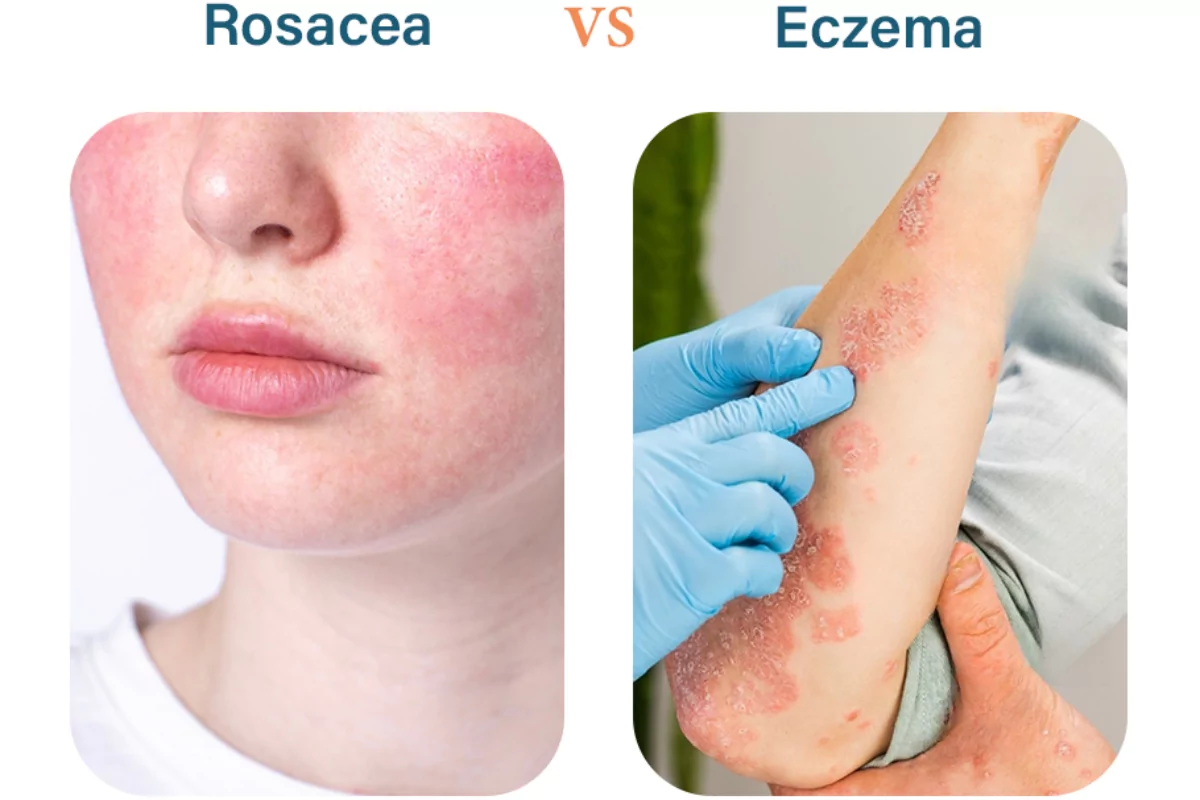
The symptoms of eczema can vary widely among individuals and may include intense itching, dry and scaly skin, and the presence of oozing or crusting blisters. Eczema typically affects flexural areas like the elbows and knees, although it can occur in other regions as well. The exact cause of eczema is multifactorial, involving a combination of genetic, immunological, and environmental influences. Compromises in the skin barrier function play a significant role, making individuals more susceptible to irritants and allergens.
Key Differences
While both rosacea and eczema are chronic inflammatory skin conditions, there are several key differences in their presentation, causes, and affected populations:
- Location and Distribution: Rosacea mainly affects the central areas of the face, whereas eczema can appear on various parts of the body but is frequently seen in the flexural regions.
- Age of Onset: Rosacea is more commonly seen in adults, while eczema often appears in childhood, although it can persist or recur in adults.
- Symptoms: Rosacea is characterized by persistent redness and visible blood vessels, whereas eczema often presents with dry, itchy patches and may involve blisters or oozing.
- Triggers: Rosacea triggers include heat, spicy foods, alcohol, and stress, while eczema is often aggravated by contact with allergens, irritants, and certain environmental factors like dry weather.
- Underlying Causes: Although the exact causes of both conditions remain unclear, rosacea is primarily related to vascular instability and immune response, while eczema involves skin barrier dysfunction and heightened allergic response.
Diagnostic and Treatment Approaches
Accurate diagnosis is crucial for choosing appropriate treatment for both rosacea and eczema. Dermatologists rely on clinical examination, patient history, and occasionally, skin biopsies or tests to confirm diagnoses.
For treating rosacea, options range from topical and oral medications to manage inflammation and breakouts, to laser therapies for reducing redness and visible blood vessels. Analgesics or anti-inflammatory drugs like metronidazole, azelaic acid, and tetracycline-class antibiotics are often prescribed. Identifying and avoiding known triggers also plays a critical role in managing symptoms.
Management of eczema focuses on restoring and maintaining healthy skin barrier function, which involves using emollients and moisturizers to keep the skin hydrated, as well as topical corticosteroids for reducing inflammation during flare-ups. Non-steroidal topical treatments, phototherapy, and systemic medications are available for severe cases. Identifying and avoiding contact with allergens or irritants is important in controlling eczema.
Psychological and Social Impact
Both rosacea and eczema can significantly affect a person’s psychological wellbeing and social interactions. The visible nature of these skin conditions can lead to self-consciousness, low self-esteem, and social anxiety. Therefore, addressing the emotional and mental health aspects alongside physical symptoms is essential. Support groups and counseling can be invaluable resources for individuals navigating the social challenges posed by these conditions.
Emerging Research and Future Directions
Research in the fields of rosacea and eczema is ongoing, providing new insights into their pathophysiology and potential treatments. For rosacea, exploring vascular and immune system roles highlights potential areas for targeted intervention, with novel medications aiming to address flushing and inflammation more effectively. Recent advancements in understanding the skin microbiome’s involvement in eczema are guiding the development of probiotic treatments to restore a healthy skin environment.
Continued collaboration between researchers, clinicians, and patients is essential for developing more holistic treatment approaches that not only address symptoms but also improve overall quality of life. As understanding of these skin conditions evolves, the hope for more effective and personalized treatments continues to grow, enhancing care for all affected individuals. This confluence of research, innovation, and patient-centered care holds promise for a future where managing rosacea and eczema becomes more accessible and impactful for people worldwide.
Causes and Risk Factors of Eczema and Rosacea
Eczema and rosacea are chronic skin conditions that, although sharing some overlapping symptoms, differ significantly in their manifestations and underlying causes. Understanding these differences is key in managing each condition effectively.
Eczema, also known as atopic dermatitis, often starts in early childhood, although it can develop at any age. It manifests as red, inflamed, and itchy skin, most commonly on the cheeks, arms, and legs. The exact cause of eczema is unknown, but it is believed to result from a combination of genetic, environmental, and immune system factors. Families with a history of eczema, allergies, or asthma have higher chances of passing the condition to subsequent generations. Environmental factors such as harsh weather conditions, pollutants, and irritants like detergents can trigger or worsen eczema episodes.
Rosacea, on the other hand, typically begins after the age of 30, and its causes are also not clearly understood. It manifests primarily on the face with symptoms such as redness, visible blood vessels, and in some cases, acne-like bumps. Genetic predisposition plays a role in rosacea, as it is more frequently observed in individuals with fair skin, light hair, and a family history of the disorder. Environmental factors such as temperature extremes, spicy foods, alcohol, stress, and heat can trigger rosacea flare-ups. Certain microorganisms like the Demodex mite and bacteria have also been investigated for potential links to rosacea.
Living With Eczema and Rosacea
Living with eczema or rosacea can be challenging due to the visible nature of the symptoms, which can affect psychological well-being and quality of life. It’s important for individuals to recognize the triggers and patterns associated with their condition to develop effective lifestyle strategies.
For those with eczema, maintaining skin hydration is crucial. Using emollients and gentle moisturizing products can help prevent dry skin and reduce flare-ups. Keeping a symptom diary can assist in identifying specific allergens or irritants that contribute to eczema, such as certain fabrics or foods. Stress management techniques such as yoga, mindfulness, and regular exercise can also aid in managing symptoms, as stress is a known exacerbator of eczema.
Rosacea patients often need to implement similar strategies to manage their skin health. Gentle skincare products and sunscreens must be chosen to avoid aggravating sensitive skin. Identifying and avoiding specific triggers, such as hot beverages or intense exercise, can prevent flare-ups. For many, makeup and skincare may play a role in not just managing symptoms but in improving self-esteem and confidence in social situations. Engaging with support groups or seeking counseling when needed is encouraged to combat the psychological effects associated with visible skin conditions.
Managing Eczema and Rosacea
Effective management of eczema and rosacea requires a multifaceted approach involving both medical treatments and lifestyle adjustments. Working with healthcare professionals to develop an individualized treatment plan is essential for managing these conditions effectively.
In terms of medication, eczema is often treated with topical corticosteroids to reduce inflammation and relieve itching. Non-steroidal anti-inflammatory agents and oral antihistamines may also be used depending on the severity of the symptoms. In some cases, phototherapy (light therapy) is recommended for those who do not respond to conventional treatments. Moisturizing regularly and choosing the right bath products can help enhance the effects of prescribed treatments.
For rosacea, topical medications such as metronidazole and azelaic acid are commonly used to reduce bumps and swelling. In more severe cases, oral antibiotics like doxycycline may be prescribed to combat inflammation. Laser therapy is another option to address visible blood vessels and persistent redness. Importantly, sun protection is a crucial part of managing rosacea, as ultraviolet rays can often trigger or worsen symptoms.
As both conditions are chronic with no cure, patient education is a valuable component in management plans. Understanding the importance of adherence to treatment, lifestyle modifications, and recognizing early signs of flare-ups empowers individuals to take control of their condition. Regular check-ins with dermatologists help tailor treatments as needed, ensuring optimal skin health is maintained over time. As knowledge of these conditions advances, new therapies and management strategies continue to emerge, offering hope for improved quality of life for those affected.
Emerging Research and Trends in Eczema and Rosacea
Advancements in research are continuously shedding light on new aspects and potential treatments for eczema and rosacea. Recent studies have focused on the microbiome’s role in skin health, suggesting that imbalances in skin bacteria may contribute to the development and exacerbation of these conditions. This line of research is paving the way for innovative treatments such as probiotic skincare products or therapies designed to restore microbiomic balance. Additionally, new insights into genetic markers associated with eczema and rosacea are leading to more personalized treatment approaches tailored to an individual’s genetic profile. These insights not only enhance the understanding of the disorders but also offer fresh hope for more effective management and possible future preventive strategies. Moreover, ongoing clinical trials continue to explore novel medications and therapies, including biologics and small molecule inhibitors, which could revolutionize the treatment landscape for individuals living with eczema and rosacea.
Innovations in Managing Eczema and Rosacea
Innovations in the management of eczema and rosacea are providing new options and hope for patients. Biologic treatments, which are targeted therapies derived from living cells, represent a groundbreaking approach for difficult-to-treat cases of eczema. These therapies work by targeting specific components of the immune system involved in inflammation, offering relief to those who do not respond well to traditional treatments. Dupilumab, for example, is a monoclonal antibody now used to treat moderate to severe eczema by inhibiting certain inflammatory pathways.
For rosacea, advances in laser and light-based therapies continue to improve the precision and efficacy of treatment. Devices that perform pulsed dye laser or intense pulsed light procedures can significantly reduce the appearance of visible blood vessels and redness without damaging surrounding skin. Furthermore, new topical treatments continue to emerge, focusing on combating inflammation and bacterial imbalance with fewer side effects.
Advancements in digital health technologies are also playing a role in managing these conditions, with apps designed to track symptoms, identify triggers, and remind patients to apply treatments. Such tools enhance patient engagement and adherence to treatment plans, allowing individuals to take a more active role in their care.
These innovations and emerging treatments are not only improving symptom management but are also enhancing the quality of life for those living with eczema and rosacea, signaling a promising shift towards more effective and personalized healthcare.


